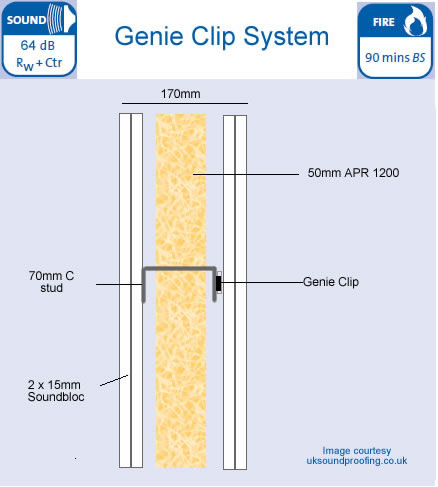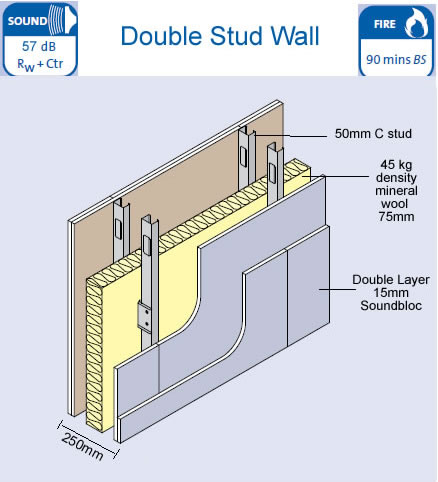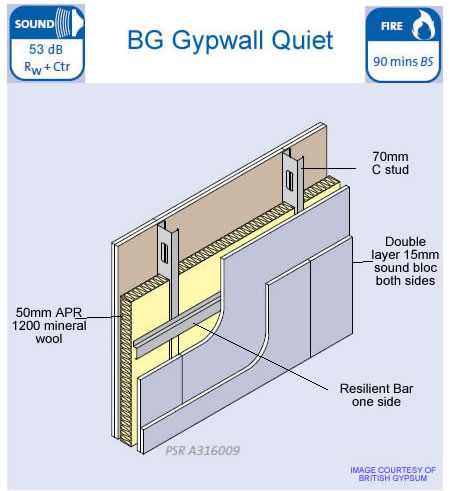Using Metal Stud to sound proof separating walls ( Party Walls) to a regulation E standard. - For use where you are separating off a large space into a number of separate dwellings. It is key that you understand the difference when specifying a wall between Rw+Ctr and DnTw + Ctr.
On this page we will provide three separate wall soundproofing solutions in descending order of performance ( as tested in the laboratory). Each of the systems would appear to be well inside regulation requirements, however there is up to an 8 decibel performance difference between lab tested systems (Rw figure) and the field test data (Dntw figure). You are required to pass an in the field test so is is key that you work with a system that is generously inside the 43db threshold.
Each system has a sound rating associated with it . Make sure the RW system you choose is generously inside the Dntw figure of 43db that you are required to achieve. Beware: Although often specified by architects the last system we offer System C- BG quiet wall, in the field tests is often very close to the limit and for this we hesitate to recommend it.
Benefits are speed of installation and low overall thickness of 170mm.

The traditional method of assuring sound proof regulation E compliance with a separating wall.

Select this system with caution the Dntw attained figures will be lower.


 Genie Clip System
Genie Clip System Double Stud System
Double Stud System Gyproc Quiet Wall System
Gyproc Quiet Wall System| Rw + Ctr Airbourne Sound | Dntw + Ctr Airbourne Sound | Partition Thickness | |
|---|---|---|---|
| New build | - | 45 dB minimum | - |
| Refurbishment | - | 43 dB minimum | - |
| Genie Clip Wall | 64dB | 55-58Db (estimated)* | 170mm |
| Double Stud Wall | 57dB | 50-53Db (estimated)* | 250mm |
| Gyproc Quiet wall | 53dB | 44-46Db (estimated)* | 146mm |
* Our estimated figures are derived from in the field experience of how systems perform. Many factors affect performance. Accuracy of fitting and flanking transmission issue being the most important
© 2021 Soundshield Ltd. All Rights Reserved.